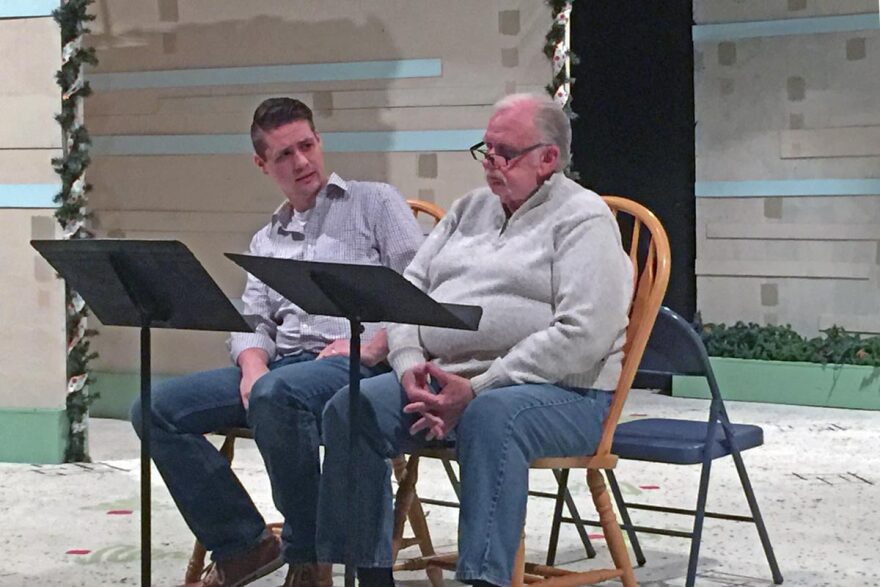Voters are being asked to create $6.6 million a year for arts and culture groups in Larimer County. But the number that has these groups most excited is zero.
If ballot passes, there would be more free days at local museums and free tickets for productions and concerts in the large Northern Colorado county that includes Fort Collins, Loveland and Estes Park.
Wendy Ishii, founder of Bas Bleu Theatre in Fort Collins, likened it to getting back to theaterŌĆÖs roots.
ŌĆ£When theater was done outside, you know, next to the bear-baiting pits and all that, everybody could go,ŌĆØ Ishii said. ŌĆ£As it moved indoors it got more and more expensive, and then it became - only the people of means could afford it. But I think this is a way of allowing us in our contemporary times to get back to that very, very healthy aspect of ShakespeareŌĆÖs audiences or Greek audiences when arts were accessible to everyone.ŌĆØ
Case in point: Denver.
In 1988, voters approved DenverŌĆÖs Scientific and Cultural Facilities District. It spans the metro area including Adams, Arapahoe, Boulder, Broomfield, Denver, Douglas and Jefferson counties. Last year, the SCFD generated $54 million for more than 300 organizations, including the Denver Botanical Gardens and the Boulder Philharmonic. According to a recent from the Colorado Business Committee for the Arts, SCFD funds generated $520 million in tourism and almost 11,000 jobs.
It also meant more than for area children at hotspots like the Denver Zoo and the Denver Art Museum.
In an effort to mirror that success, LarimerŌĆÖs SCFD effort also calls for a sales tax that is 1 cent for every $10 spent, excluding groceries and pharmaceuticals, for the next 10 years.
There is no organized effort against the initiative, but some have questioned it on the grounds that it raises taxes.
If Initiative 200 passes, Yes On 200 campaign manager Kelly Giddens says the money would be divided into two pots: a sustainability fund that gives groups a percentage of their operating budget, and an innovation fund, which would offer competitive grants for out-of-the-box and collaborative efforts.

According to Giddens, each would - in a way - support the other.
ŌĆ£I think the most exciting thing for me about the SCFD is how empowering it will be to our arts organizations,ŌĆØ she said. ŌĆ£When youŌĆÖre an artist, when youŌĆÖre trying to put together a production, and all you can do is worry about keeping your doors open - I think that that messes with your ability to really be creative.ŌĆØ
Juliana Bishop Hoch can attest to that.
The Loveland Opera Theatre executive and artistic director said it can be a struggle just to keep the doors open.
ŌĆ£Our upcoming opera, ŌĆśMerry Wives of Windsor,ŌĆÖ has a price tag of $55,000,ŌĆØ Hoch said. ŌĆ£So we fundraise all year long to try to be able to afford to put that on.ŌĆØ
While SCFD funding canŌĆÖt be used for capital construction projects, it can go towards expanded programming, innovative efforts and better pay for artists.
But again, itŌĆÖs the idea of free that is most enticing.
Loveland Opera Theatre is already planning to provide a free showing of ŌĆśThe Merry Wives of WindsorŌĆÖ for 1,200 elementary school students through its current programming. With the SCFD, Hoch said she could do this every year and expand it to include more children.
Providing young people with an introduction to the arts can steer them towards more participation, including careers in the arts, said Bas BleuŌĆÖs Ishii.
ŌĆ£Offering programs at highly discounted rates or totally for free to our children is going to create the next generation of thinkers, scientists, artists,ŌĆØ Ishii said. ŌĆ£So to be able to start that now, thatŌĆÖs huge.
ŌĆ£In Denver, all those kids who grew up going to the botanical gardens and the zoo are now in their 20s and 30s and practitioners in these fields,ŌĆØ she added. ŌĆ£Because they grew up learning about them thanks to the SCFD.ŌĆØ







